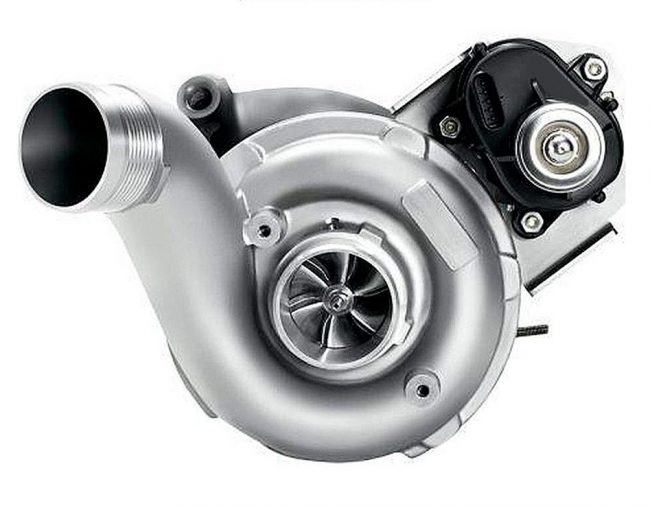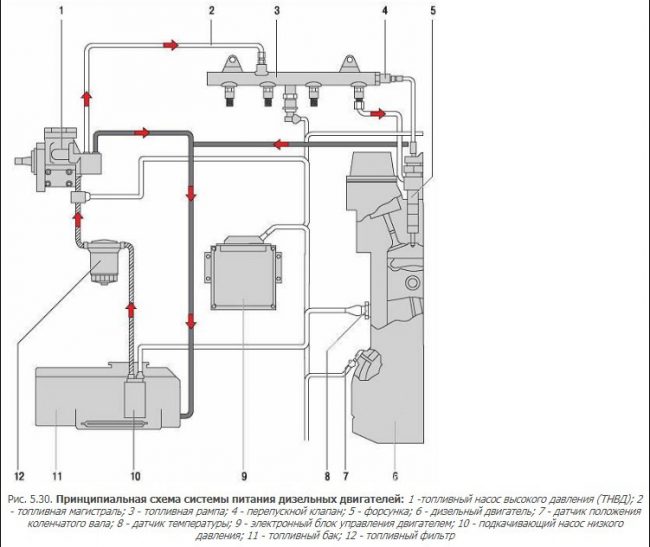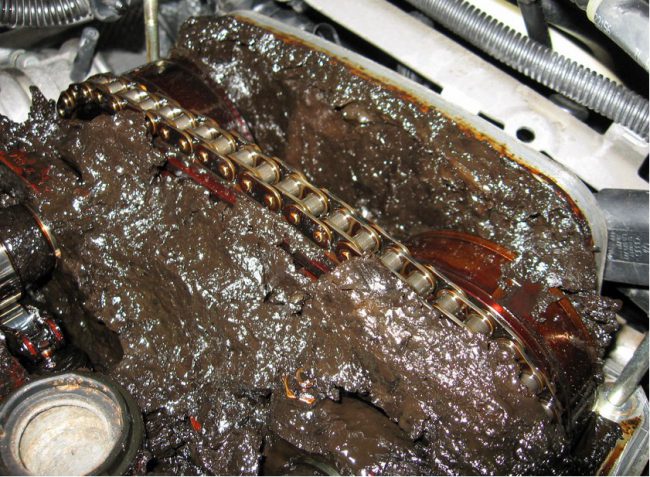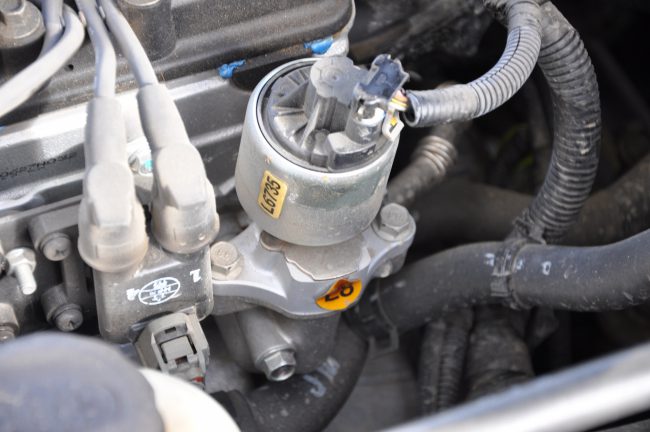
Engine Hyundai, KIA D4EA
Content
Engineers - engine builders of the Korean company Hyundai for the Hyundai Tucson crossover have developed and put into production a new model of the power unit. Later, the engine was installed on the Elantra, Santa Fe and other car brands. The high popularity of the power unit is due to a number of innovative technical solutions.
Description
The D4EA engine has been available to the consumer since 2000. The release of the model lasted for 10 years. It is a diesel four-cylinder in-line turbocharged power unit with a volume of 2,0 liters, a capacity of 112-151 hp with a torque of 245-350 Nm.

The engine was installed on Hyundai cars:
- Santa Fe (2000-2009);
- Tucson (2004-2009);
- Elantra (2000-2006);
- Sonata (2004-2010);
- Traiet (2000-2008).
On Kia cars:
- Sportage JE (2004-2010);
- Missing the UN (2006-2013);
- Magentis MG (2005-2010);
- Cerato LD (2003-2010).
The power unit was equipped with two types of turbines - WGT 28231-27000 (power was 112 hp) and VGT 28231 - 27900 (power 151 hp).

The cylinder block is made of ductile iron. The cylinders are bored inside the block.
Aluminum alloy cylinder head. It has 16 valves and one camshaft (SOHC).
Crankshaft steel, forged. It sits on five pillars.
Pistons are aluminum, with cooling of the internal cavity by oil.
High pressure fuel pump drive gear, from the camshaft.
Timing belt drive. The belt is designed for 90 thousand kilometers of the car.
Bosch common rail fuel system. From 2000 to 2005, the fuel injection pressure was 1350 bar, and since 2005 it has been 1600 bar. Accordingly, the power in the first case was 112 hp, in the second 151 hp. An additional factor in raising power was different types of turbines.

Hydraulic compensators greatly facilitate the adjustment of the thermal clearance of the valves. But they were installed only on engines with a single camshaft (SOHC). The thermal clearance of valves on cylinder heads with two camshafts (DOHC) is regulated by the selection of shims.
Lubrication system. The D4EA engine is filled with 5,9 liters of oil. The factory uses Shell Helix Ultra 5W30. During operation, a good alternative was selected for him - Hyundai / Kia Premium DPF Diesel 5W-30 05200-00620. The manufacturer recommends changing the oil in the engine lubrication system after 15 thousand km of the car's run. The instruction manual for a specific car model indicates which brand of oil to use and it is not advisable to replace it with another.
The balance shaft module is located in the crankcase. Absorbs inertial forces of the second order, significantly reduces the vibration of the motor.

The EGR valve and particulate filter significantly increase the environmental standards of the exhaust. They were installed on the latest versions of the engine.
Technical specifications
| Manufacturer | GM THAT |
|---|---|
| Engine volume, cm³ | 1991 |
| Power, HP | 112-151 * |
| Torque, Nm | 245-350 |
| Compression ratio | 17,7 |
| Cylinder block | cast iron |
| Cylinder head | aluminum |
| Cylinder diameter, mm | 83 |
| The piston stroke, mm | 92 |
| Vibration damping | balancing shaft module |
| Valves per cylinder | 4 (SOHC) |
| Hydraulic compensators | + |
| Timing drive | belt |
| Turbocharging | WGT 28231-27000 and VGT 28231 – 27900 |
| Camshaft adjuster | no |
| Fuel system | CRDI (Common Rail Bosch) |
| Fuel | diesel fuel |
| The order of the cylinders | 1-3-4-2 |
| Environmental standards | Euros 3/4** |
| Service life, thousand km | 250 |
| Weight, kg | 195,6-201,4 *** |
* power depends on the type of installed turbine, ** on the latest versions, an EGR valve and a particulate filter were installed, *** weight determines the type of turbocharger installed.
Reliability, weaknesses, maintainability
Any technical characteristic will not give a complete picture of the engine until the three main factors that characterize the operational capabilities of the power unit are considered.
Reliability
In matters of engine reliability, the opinions of motorists are not unambiguous. For someone, he nurses 400 thousand km without the slightest hint of the possibility of an early repair, someone already after 150 thousand km begins to make major repairs.
Most motorists say with confidence that if all the recommendations recommended by the manufacturer for the maintenance and operation of the motor are followed, it can far exceed the declared resource.
Special requirements are placed on the quality of technical fluids, especially oil and diesel fuel. Of course, in the Russian Federation (and other republics of the former CIS) fuel and lubricants do not always meet the standards, but this is not a reason to pour the first fuel encountered at gas stations into the fuel tank. The result of using low-grade diesel fuel in the photo.

This also automatically adds repeated replacements of fuel system elements, frequent (and not free) rides to service stations, unnecessary car diagnostics, etc. Figuratively speaking, “penny diesel fuel” from dubious sources turns into a lot of ruble costs for engine repairs.
D4EA is also very sensitive to oil quality. Refueling with non-recommended varieties leads to irreversible consequences. In this case, a major overhaul of the engine is inevitable.
Thus, all problems in the motor begin to arise only if it is used incorrectly and the manufacturer's recommendations are not followed. The engine itself is reliable and durable.
Weak spots
Any motor has its weak points. D4EA also has them. One of the most dangerous phenomena is propensity for oil. It occurs due to clogging of the crankcase ventilation system. The basic version (112 hp) of the engine did not have an oil separator. As a result, excess oil accumulated on the valve cover, some of it penetrated into the combustion chambers. There was an ordinary waste of oil.
A clogged breather of the ventilation system contributed to the creation of excess gas pressure in the crankcase. This situation ends by squeezing oil through various seals, such as crankshaft oil seals.
Meets burnt-out sealing washers under the nozzles. If a malfunction is not detected in time, the cylinder head is destroyed. First of all, landing nests suffer. Nozzles can present another nuisance - if they are worn out, the stable operation of the engine is disturbed, and its start worsens. The cause of wear in most cases is not high-quality diesel fuel.
After long runs on some motors, it is noted jammed water pump rotor. The danger lies in the breaking of the timing belt with all the ensuing consequences.
The timing belt has a short service life (90 thousand km). In the event of its breakage, the valves are bent, and this is already a serious repair of the power unit.
It is not uncommon to encounter such a malfunction as EGR valve stuck open. It must be borne in mind that many motorists put a plug on the valve. Such an operation does not bring harm to the engine, although it somewhat reduces environmental standards.

There are weaknesses in the D4EA, but they arise when the rules for operating the motor are violated. Timely maintenance and diagnostics of the engine condition eliminates the causes of malfunctions in the power unit.
Maintainability
ICE D4EA has good maintainability. The key to this is primarily its cast-iron cylinder block. It is possible to bore the cylinders to the required repair dimensions. The design of the motor itself is also not very difficult.
There are no problems with spare parts for replacing failed ones. They are available in any assortment in specialized and online stores. You can choose to purchase original components and parts or their analogues. In extreme cases, any used spare part is easy to find on numerous disassemblies.
It should be noted that engine repair is quite expensive. The most expensive node is the turbine. Not cheap will be the replacement of the entire fuel system. Despite this, it is recommended to use only original spare parts for repairs. Analogues, as a rule, are made in China. Their quality in most cases is always in doubt. Assemblies and parts purchased at disassembly also do not always meet expectations - no one can accurately determine the remaining resource of a used spare part.
Often there are situations when the replacement of one element of the engine causes the mandatory replacement of others. For example, in the event of a break, or a planned replacement of the timing belt, its tensioner roller must also be changed. If this operation is ignored, a prerequisite for jamming the roller will be created, which in turn will again cause the belt to break.
There are plenty of such nuances in the engine. Therefore, only those who know the engine structure well, have experience in performing such work and the necessary special tools can do repairs on their own. The most ideal solution is to entrust the restoration of the unit to specialists from a specialized car service.
You can get an idea about the device and the stages of disassembling the engine by watching the video.
Tuning
Despite the fact that the engine is produced initially forced, the possibility of increasing its power is available. It should be noted that this applies only to the first versions of the engine (112 hp). Let's immediately pay attention to the fact that D4EA mechanical tuning is impossible.
Flashing the ECU allows you to increase power from 112 hp to 140 with a simultaneous increase in torque (by about 15-20%). At the same time, there is a slight decrease in fuel consumption in urban operation. In addition, cruise control appears on some cars (Kia Sportage).
In the same way, it is possible to reprogram the ECU version of the 125-horsepower engine. The operation will increase power to 150 hp and increase torque to 330 Nm.
The possibility of tuning the first version of D4EA is due to the fact that the initial ECU settings at the manufacturing plant are underestimated in power from 140 hp to 112. That is, the engine itself will withstand increased loads without any consequences.
For chip tuning of the power unit, you need to purchase the Galletto1260 adapter. The program (firmware) will be presented by a specialist who will reconfigure the control unit.


Changing the ECU settings can be done at specialized service stations.
It is undesirable to tune engines of later versions, since such intervention will significantly reduce the life of the internal combustion engine.
Korean engine builders have created not a bad turbodiesel. Reliable operation after 400 thousand km of run confirms this statement. At the same time, for some motorists, it requires a major overhaul after escaping 150 thousand km. It all depends on the attitude towards the motor. Subject to all the recommendations of the manufacturer, it will be reliable and durable, otherwise it will cause the owner a lot of trouble and will significantly ease his budget.

